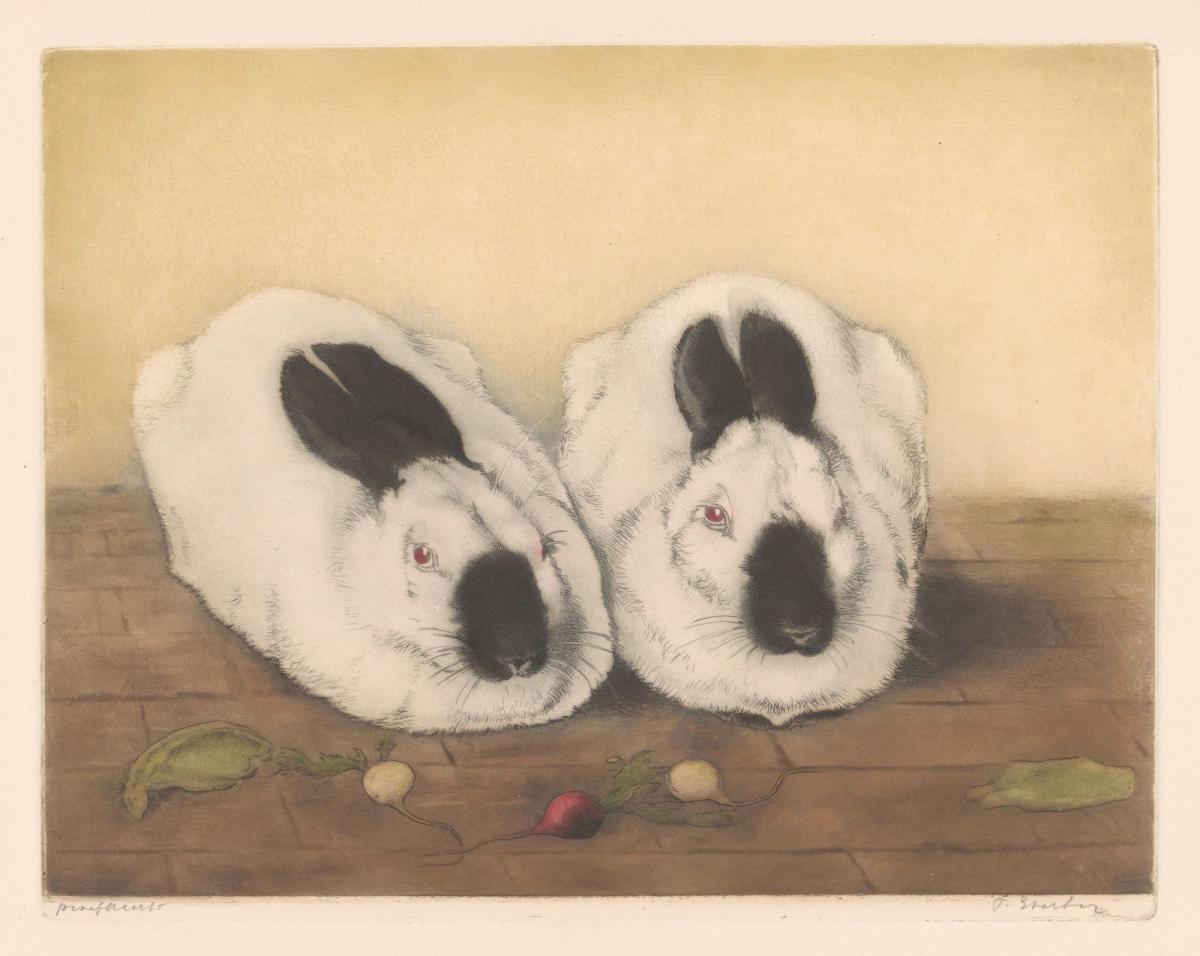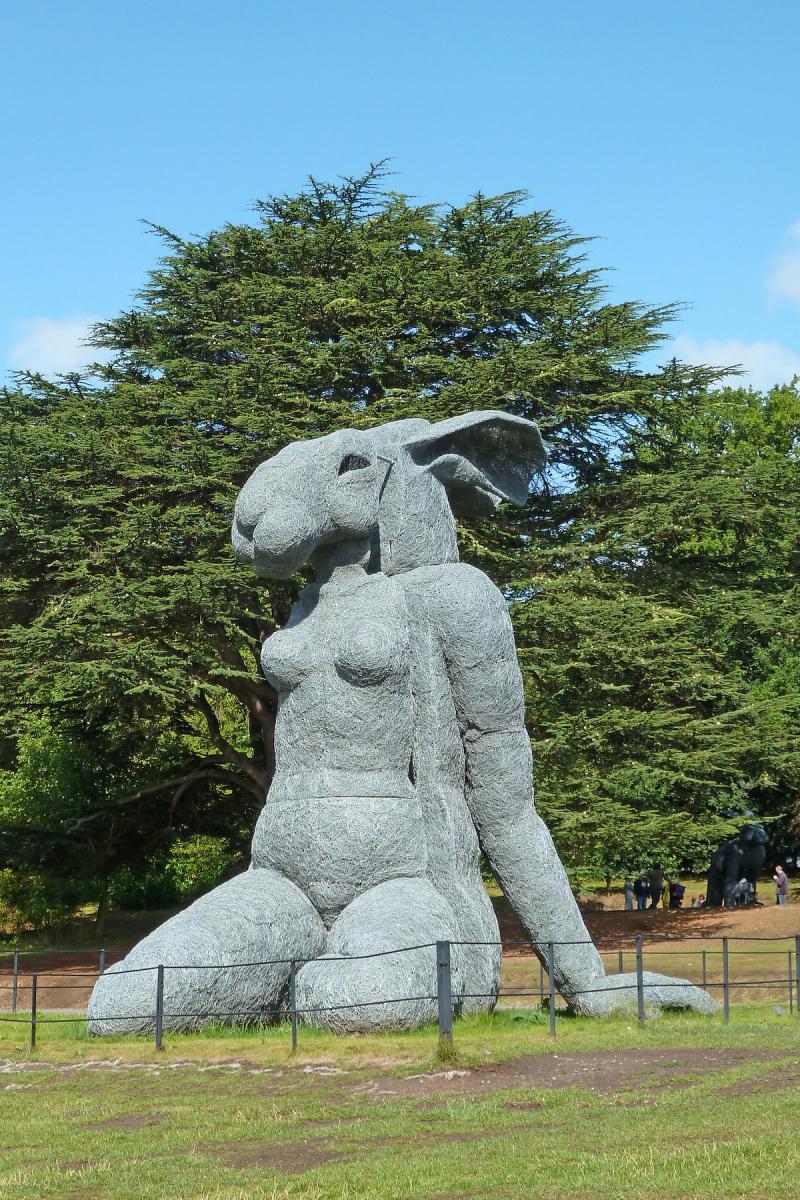This wonderful Cornish workshop and museum is dedicated to the legacy of studio pottery trailblazer Bernard Leach
Discover some charming bunnies this Easter
Discover some charming bunnies this Easter
7 Apr 2020
No one is entirely sure where the tradition of the Easter bunny originated. Some say it could stem from pagan traditions, where the animal represented new life and fertility, which would go some way to explain the affiliation with the Resurrection.
Whatever the origin, there is no denying that the rabbit has been used as a powerful symbol for artists, whether it be to articulate notions of renewal, or as an analogy for society. Here, we take a look at some of the most delightful bunnies around.
Edmund de Waal’s The Hare with Amber Eyes
 © Judisches Museum Wien
© Judisches Museum Wien
Perhaps the most famous bunny in art, this tiny creature forms part of Edmund de Waal’s stunning collection of 264 netsuke,an intricately carved Japanese ornament traditionally attached toa kimono’s obi belt. It is the subject of his critically acclaimed memoir The Hare with Amber Eyes, which is described as a biography of both the collection and the artist’s family. It is now on long-term loan at the Jewish Museum in Vienna, where it is available for handling, as per De Waal’s instructions. He explains that, ‘In The Hare with Amber Eyes, I wrote of how objects can evoke histories through touch, and a stipulation of the loan is that a group will be available for handling by the many visitors to the museum.’
Two Himalayan Rabbits by Frans Everbag

Although this might appear to be a painting, it is in fact a wonderfully detailed etching by Dutch printmaker Frans Everbag. He used a combination of meticulous linework and aquatint colour to compose prints that were akin to watercolour in their subtlety, as exemplified by the rabbits’ carefully articulated fur. The artist’s penchant for popular subjects such as flowers, birds and other small animals made him a commercial success. This work sits in the Rijksmuseum’s collection in Amsterdam.
YiMiao Shih’s satirical rabbits
The Epic: The Last Battle of Rabbrexit © YiMiao Shih
YiMiao creates satirical versions of our society by replacing humans with rabbits. Her absurdist project Rabbrexit Means Rabbrexit (which went on show at the House of Illustration in 2019) includes epic embroideries based on ancient tapestries, newly minted 52p coins and aeroplane landing cards, all of which foretell a fictional expulsion of rabbits from the country. By combining a surreal and arguably cute aesthetic with the context of fraught political and cultural relations, YiMiao encourages us to enter into a dialogue concerning the realities of our society.
Sophie Ryder’s Sitting sculpture
 Photo by Tim Green
Photo by Tim Green
This anthropomorphic hare by Sophie Ryder resides in the bucolic grounds of Yorkshire Sculpture Park. The artist has a long-standing relationship with the park after undertaking a residency in 1986, which allowed her to develop work that is defined as ‘an exploration of the female psyche and sexuality’ and frequently references the artist’s own body and its relationship to the distinct form of the hare. Over the years her exploration of this particular figure has developed into the fully formed character of the Lady Hare, which embodies maternal emotions, and is often featured in dialogue with the more traditionally ‘masculine’ image of the Minotaur.
Holly Black is The Arts Society’s Digital Editor
Stay in touch with The Arts Society! Head over to The Arts Society Connected to join discussions, read blog posts and watch The Arts Society at Home - a series of films by Arts Society Accredited Lecturers, published every fortnight.
About the Author
Holly Black
JOIN OUR MAILING LIST
Become an instant expert!
Find out more about the arts by becoming a Supporter of The Arts Society.
For just £20 a year you will receive invitations to exclusive member events and courses, special offers and concessions, our regular newsletter and our beautiful arts magazine, full of news, views, events and artist profiles.
FIND YOUR NEAREST SOCIETY
MORE FEATURES
Ever wanted to write a crime novel? As Britain’s annual crime writing festival opens, we uncover some top leads
It’s just 10 days until the Summer Olympic Games open in Paris. To mark the moment, Simon Inglis reveals how art and design play a key part in this, the world’s most spectacular multi-sport competition



